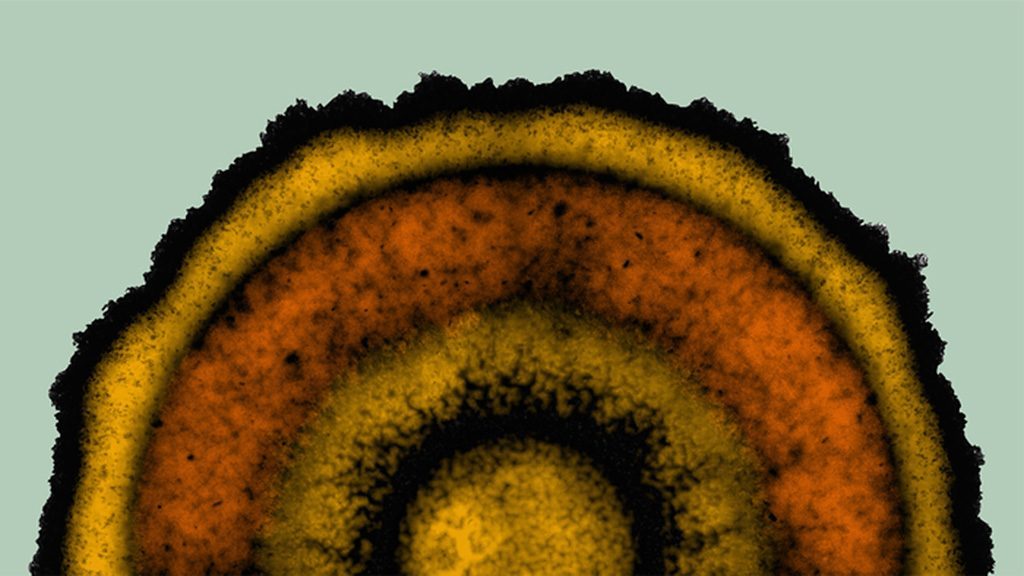
This pattern of concentric rings was ‘painted’ by a biofilm of bacteria as it developed. Behind the division into different sections is a kind of molecular clock that was previously unknown in bacteria.
Biofilms consist of communities of microorganisms, such as bacteria, embedded in a layer of slime that they produce. They are formed from different cell types and are ubiquitous: on teeth, in soil, on plants. Until now, it was assumed that they could not arrange themselves in an organized manner, as is known from the more highly developed flora and fauna. A team of biologists led by Gürol Süel from the University of California in San Diego refutes this assumption using a biofilm of Bacillus subtilis bacteria. With the help of experiments and a mathematical model, they also discovered the underlying genetic mechanism.
Süel explains the far-reaching consequences of this finding for biology: “From a biological point of view, our results indicate that the concept of cell pattern formation during development is much older than previously thought. Apparently, the ability of cells to segment themselves in space and time did not first emerge in plants and vertebrates, but could go back over a billion years.”
When a biofilm expands and consumes nutrients, nutrient deprivation spreads like a wave through the bacterial community. This freezes a kind of molecular clock in each cell at a specific time and place. As a result, patterns are formed from repeating zones of cells in different metabolic states. This mechanism shows parallels to the so-called clock and wavefront model, which is discussed as a description of a process of embryonic development in vertebrates.
“We can see that bacterial communities are not just balls of cells,” says Süel. He has high hopes for the newly discovered similarity of developmental patterns in bacteria and other living beings: “With a bacterial system we can provide some answers that are difficult to obtain in vertebrate and plant systems because bacteria offer experimentally more accessible systems that provide new insights could provide for the field of development.”